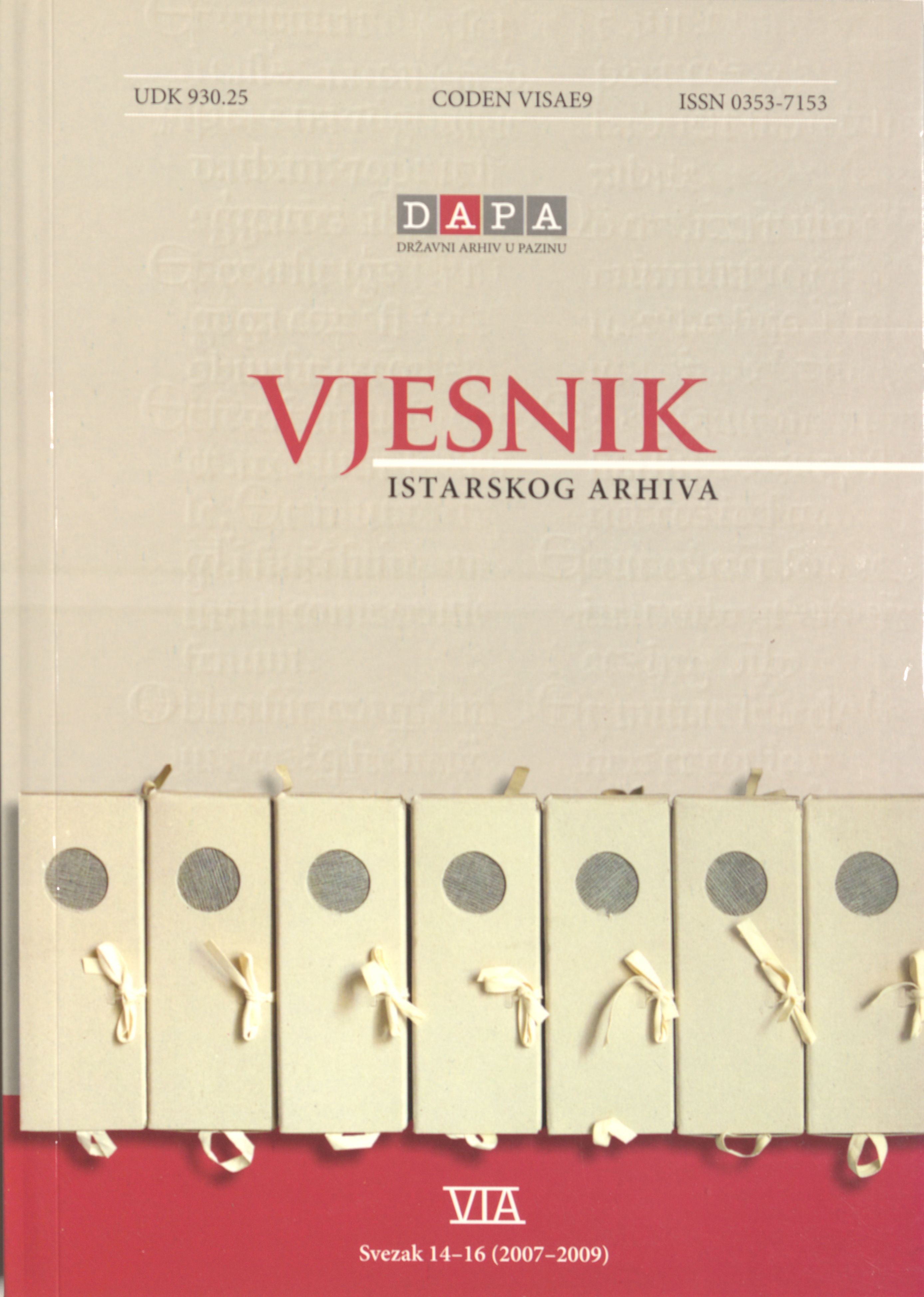Territorial and administrative organisation on the territory of the present-day Region of Istria in the period from 1945 until 1990: a contribution to the production of the administration schematism
Keywords:
district, people’s liberation/people’s/district/municipal/town/local committee, community of municipalitiesAbstract
The paper gives an overview of the territorial and administrative bodies acting in the territory of the present-day Region of Istria in the period from 1945 until 1990, in accordance with their status over single periods. The status of the bodies was defined by the regulations governing their subject-matter jurisdiction, and regulations go-verning the administrative and territorial division. The territorial and administrative organisation was divided into four periods: from 1945 to 1947, from 1947 to 1955, from 1955 to 1965 and from 1965 to 1990. The first period saw Istria divided into Zone A and Zone B and the Free Territory of Trieste and not being part of the Federative People’s Republic of Yugoslavia. An endeavour to simplify the initial structure, which at the beginning included regional, district, municipal and local people’s committees, as rather nonfunctional, can be noted. Regional people’s liberation committees, followed by the municipal, were soon abolished, which indicates that the real governing levers on site were the local people’s committees at a lower level and the district people’s committees at the middle level. During the second period all the districts of Istria, apart from the District of Buje, which remained under the dominion of Italy until 1954, became a constituent part of the Federative People’s Republic of Yugoslavia. In this period Istria was part of the Region of Rijeka. In 1953 all local people’s committees ceased to exist and a new administrative and territorial division was introduced activating the people’s committees of districts, people’s committees of towns and town districts and people’s committees of municipalities. Concentration and decrease of the number of local and district committees and the creation of a territorial and administrative structure based on municipalities can be noted. With a view of the material strengthening of districts, during the third period a further administrative and territorial division was carried out ending in concentration of municipalities and districts. Istria, with its people’s committees of municipalities, was included in the Pula District. The third period lasted from 1955 until 1965. The last, fourth period comprises the period between 1965 and 1990 when the Pula District and the Rijeka District merged into a single social and political unity – the Rijeka District cancelling the activities of the Pula District People’s Committee. In other parts of the Federative People’s Republic of Yugoslavia districts were abolished in 1967 and only in Istria the district, as an administrative and territorial unit, ceased to exist in 1965. The territory of Istria was subjected to the Rijeka District People’s Assembly, which was active until 1967, and all matters under the jurisdiction of district assemblies and their bodies were transferred under the jurisdiction of municipal assemblies and their bodies. In 1974 communities of municipalities are established. Istria becomes part of the Rijeka Community of Municipalities and remains its part until 1986 when the community of municipalities are abolished and operate as autonomous communities until 1990 when the new Constitution of the Republic of Croatia was enacted.
Downloads
Published
Issue
Section
License

This work is licensed under a Creative Commons Attribution-NonCommercial 4.0 International License.

